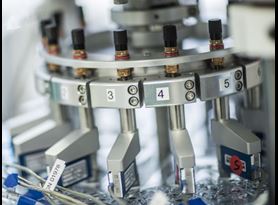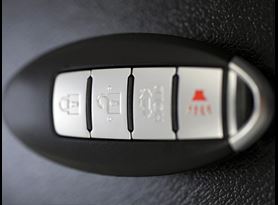EMC Requirements for Medical Devices

By Engaged Expert
Steve HayesSteve Hayes has over 30 years of experience in the product approvals industry and serves on numerous national and international standards committees.
In this article, Steve Hayes discusses the key requirements when looking at the impact of electromagnetic interferences on medical devices. He explains some issues manufacturers should consider for risk assessment, electrical safety, EMC, and radio testing. He shows that a single standard does not provide all the information manufacturers need.
EMC requirements for medical devices - why is it important?
Medical devices are some of the most heavily regulated product types available on the market today. It is for good reason - any type of product failure can have negative consequences, from patients not seeing the therapeutic benefit of the device to injuries or even deaths.
When the medical device is merged with wireless functionality, the regulatory framework becomes even more complex. We need to know more about regulatory compliance to make sure our products are safe, fit for purpose, and meet all the relevant regulations. As a result, EMC testing of medical devices is a critical part of any testing program.
Understandably, many medical device manufacturers focus on the clinical aspects of their products. They don’t always understand the impact of its use in close proximity to other electrical equipment or wireless devices. This paper seeks to highlight these issues and provide guidance on what to do.
EMC testing of non-radio medical devices
In the medical world, the term 'EMC' is not sufficient to categorize the assessment of Electromagnetic Disturbances as required by various regulations around the globe.
To ensure that medical devices provide the benefits and protection intended, EMC testing is required. This includes assessing the product's basic safety and essential performance. The requirements can be considered as being similar to functional safety for the assessment of EM disturbances in other areas of industry.
EM testing is not, and cannot, be the sole responsibility of the EMC test engineer or community to define the EM requirements for a medical device. Clinical evaluation and risk management are essential to achieving both electromagnetic compatibility and electromagnetic safety. The actual EM testing is a relatively small part of medical device approval. It considers the environment and EM risk identification, analysis, and controls to mitigate the threats posed by other electrical equipment.
EMC Testing of Medical Devices
"Any type of product failure can have negative consequences, from a patient not seeing the therapeutic benefit of the device to an injury or even a fatality." Steve HayesIEC 60601 1 edition 4
The IEC updated the EMC standard for medical, IEC 60601-1-2 in 2014, and it now stands as the 4th Edition more recently amended by AMD1:2020. There is a fundamental difference between the current and early versions of the standard. It is now a medical device safety testing standard, whereas before it was a medical device EMC testing standard.
At first glance, the changes may appear minor, but their focus has shifted from a standard based on functionality to one based on safety. The IEC has issued a new document, IEC 60601-4-2 to underline the differences. The document provides greater clarity on the issue and the difference between electromagnetic performance and electromagnetic safety assessments.
EMC Risk assessment & AIM 7351731
Risk Management is at the very heart of EMC testing of medical devices. A manufacturer is required to perform an assessment based on the standard related to any risks they identify.
The Food and Drug Administration (FDA) in the US requires manufacturers to consider the implications when exposed to known RF devices used in hospitals. AIM 7351731 specifically addresses the threats from Radio Frequency Identification Readers (RFID) and is recognized by FDA for doing so. The standard applies to any medical electrical product that could be exposed to RFID and assesses the specific modulations (across several frequency bands on which they operate).
Element has experience with conventional EMC testing and has developed a range of services to help manufacturers prepare and test against the AIM 7351731 standard. We can help with testing and risk management and mitigate these types of risks for EMC testing of your medical devices.
Radio-frequency in medical devices
When a medical electrical product incorporates a wireless function, it increases the regulatory requirements considerably. Besides supplementary EMC assessments, manufacturers need to consider the international transmissions from the product. This is to make sure that the product operates on the correct frequency, and transmits the right power level, and other essential radio characteristics. These aspects are regulated through agencies such as the FCC (US), ISED (Canada), and the European Radio Equipment Directive (CE marking).
Radio-frequency wireless technology in medical devices
Regarding the EMC for a wireless device, the manufacturer needs to determine if (or lack of) a wireless link affects the essential performance or basic safety of the device. Clearly, if a wireless device cannot communicate, its performance will be affected and its intended functionality is undermined.
Given that more and more products are designed for wireless use, the radio spectrum is becoming very congested. Bluetooth, Wi-Fi, ZigBee, and ANT+ are all technologies that use the 2.4GHz ISM band and must coexist with one another to ensure they work as intended. Wi-Fi loss for a smartphone would be a mere inconvenience until the phone is used to speed up an essential evaluation process in a medical setting.
Remote alarms that rely on a Wi-Fi connection to a nurse station could equally have a major impact if they were being used to alert critical signs of a patient or IV drug failure. Appropriate radio interference and immunity testing of medical devices help to ensure that these critical functions continue to perform in an increasingly crowded space.
“Given that more and more products are designed for wireless use, the radio spectrum is becoming very congested, increasing the probability of interference.”
AAMI TIR69 and AMSI C63.27
The Association for the Advancement of Medical Instrumentation (AAMI) published a standard called AAMI TIR69:2017 - Risk management of radio-frequency wireless coexistence for medical devices and systems. The standard helps guide manufacturers with the assessment of wireless devices, ensuring that they coexist with other wireless products.
ANSI C63.27:2017 (American National Standard for Evaluation of Wireless Coexistence) provides test methods and ensures that a wireless device works alongside other wireless devices in its intended EM environment.
The assessment for coexistence involves the communication of the medical product, followed by introducing interfering signals close or harmonically related to the fundamental frequency. This ensures that the essential performance and communication of the product are maintained.
How can Element help?
Element has a range of services to help, guide, and test for wireless coexistence and can offer these services in a variety of locations both in the UK and the US. You can count on us for EMC testing, certification, and global market access for your electronic medical devices.
For more information about EMC requirements for medical devices, or if you have any questions, contact us today.
Find related Resources
Related Services

Medical Device EMC Testing
Our medical device regulatory affairs experts partner with electronic medical device manufacturers from the design conception, identifying appropriate testing standards for their products.

Wireless Radio Testing
Element works with Chipset Vendors though to those integrating radio modules to enable them to deliver their wireless and radio products to market.

Global Market Access (GMA)
Element works as your Global Market Access service partner to help you navigate complex regulations and get your products to market quickly and efficiently.

Advisory Services
Our team of safety experts can guide you through the most effective way of getting your product onto the prospective market quickly.

